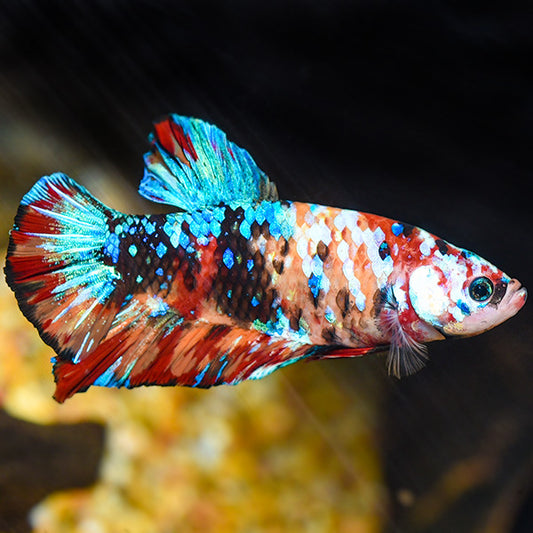Recognizing Betta Fish Habits: What Every Proprietor Must Know
Recognizing Betta Fish Habits: What Every Proprietor Must Know
Blog Article
Exactly How to Reproduce Betta Fish Efficiently: Professional Techniques and Insights for Hobbyists Wanting To Expand Their Betta Collection
Reproducing Betta fish calls for a nuanced understanding of genetics and ecological conditions, making it vital for hobbyists to come close to the process with both diligence and treatment. Developing an optimal breeding setting, picking the appropriate sets, and observing the intricacies of their courtship actions are fundamental steps that can substantially impact the outcome. The succeeding treatment of the fry is important for ensuring their healthy and balanced advancement. As we check out these key components, it ends up being clear that effective reproduction is not nearly the first pairing however includes a wider method that advantages careful factor to consider.
Recognizing Betta Fish Genetics
Comprehending the genetics of Betta fish is important for effective reproduction, as it influences characteristics such as shade, fin form, and habits. Betta fish show a varied range of shades and patterns, greatly identified by their genetic makeup. The key genetics liable for pigmentation include the "B" genetics for blue, "D" gene for red, and the "C" gene for color strength. Dog breeders can control these characteristics by picking certain parent fish that display desired features.
Along with coloration, fin morphology is one more substantial element of Betta genetics (betta fish). The form and size of fins are affected by different genetics, including those that figure out whether the fins are short, long, or veil-shaped. Recognizing these hereditary variations helps dog breeders forecast the phenotypic results of their spawn
Moreover, behavior traits such as aggressiveness and territoriality can also be influenced by genetics. These behaviors play an important role in the reproducing process, as they can impact generating success and the total personality of the resulting fry. By adequately comprehending these hereditary concepts, breeders can make educated choices, inevitably boosting their breeding programs and attaining desirable outcomes.
Preparing the Reproduction Setting
Developing an optimum breeding atmosphere is vital for the successful recreation of Betta fish. The initial action in preparing this atmosphere is to pick a proper breeding tank, preferably varying from 5 to 10 gallons. This size allows for adequate swimming room and the establishment of territories. The container must be equipped with a heater to keep a steady temperature level between 78 ° F and 80 ° F, which is important for urging generating habits.
Next, think about the usage of a sponge filter or an air stone to offer mild water blood circulation without creating solid currents that can emphasize the fish. It is vital to set up plants or breeding cones to offer hiding places and advertise convenience for the woman during the spawning process. Drifting plants, such as Java moss or water sprite, can also create a much more native environment while helping with bubble nest structure by the man.
Prior to introducing the reproducing sets, make sure the water is conditioned and totally free from hazardous chemicals, such as chlorine or heavy steels. betta fish. Regular water changes should be performed to keep ideal water quality, boosting the chances of effective breeding. With these preparations in position, the breeding atmosphere will sustain the wellness and well-being of both Betta fish
Selecting Reproduction Pairs
Selecting the right reproduction pairs is essential for attaining successful Betta fish recreation. When selecting your reproduction sets, think about numerous essential factors consisting of wellness, character, and genetics. Healthy Betta fish exhibit vibrant colors, clear eyes, and energetic actions. Picking fish that are devoid of disease guarantees a far better possibility of creating practical children.
Temperament is an additional essential consideration, as Betta fish are understood for their hostile nature. It is advisable to select a male and lady that display compatible personalities to decrease stress and anxiety during the reproducing procedure. A tranquil male can encourage a smoother courtship, while a lady that is also hostile might disrupt the process.
Hereditary history likewise plays a substantial article source role in the quality of the spawn. Breeding fish that are genetically varied can minimize the threat of genetic health and wellness concerns and improve the total vitality of the fry. It is valuable to research the family tree of both the man and woman, concentrating on desirable characteristics such as fin type, color scheme, and dimension.
The Breeding Refine
The reproduction process of Betta fish calls for mindful preparation and focus to detail to guarantee a successful outcome. It is important to prepare an ideal reproduction tank, ideally a 5-10 gallon aquarium with a temperature kept at 78-80 ° F. The storage tank should be equipped with a heating unit, filter (preferably sponge kind to prevent strong currents), and lots of water plants for the female to hide.
When the environment is set, present the chosen breeding set to the tank, enabling them to accustom. Observe their behavior; the man will certainly present fancy courtship rituals, including flaring his fins and developing a bubble nest. If the lady reveals interest, she will certainly show vertical red stripes showing preparedness for spawning.
When the lady is responsive, the set will certainly engage in a websites breeding welcome, throughout which the male feeds the eggs. Preserving optimal water conditions throughout this period is crucial for the advancement of healthy Betta fry.
Taking Care Of Betta Fry

Feeding Betta fry is important, as they require a diet plan high in protein. At first, they can be fed infusoria or liquid fry food, transitioning to finely smashed premium pellets as they grow. Feed small parts several times a day to motivate healthy growth without overwhelming the storage tank with uneaten food.

As they grow, check their development carefully and divide any type of hostile individuals to avoid damage. By offering a nurturing environment and correct nourishment, hobbyists can efficiently increase Betta fry right into lively, healthy and balanced fish, inevitably improving their reproduction undertakings.
Final Thought
Effective Betta fish reproduction calls for meticulous interest to hereditary choice, environmental conditions, and look navigate to this site after the fry. By recognizing the genetics of Betta fish and preparing an ideal reproduction atmosphere, hobbyists can boost the possibilities of creating vibrant, healthy and balanced children. Selecting compatible reproduction sets and carefully keeping track of the courtship and generating processes are important. Providing optimum care for the fry ensures their healthy and balanced growth, contributing to a thriving Betta collection.
Report this page